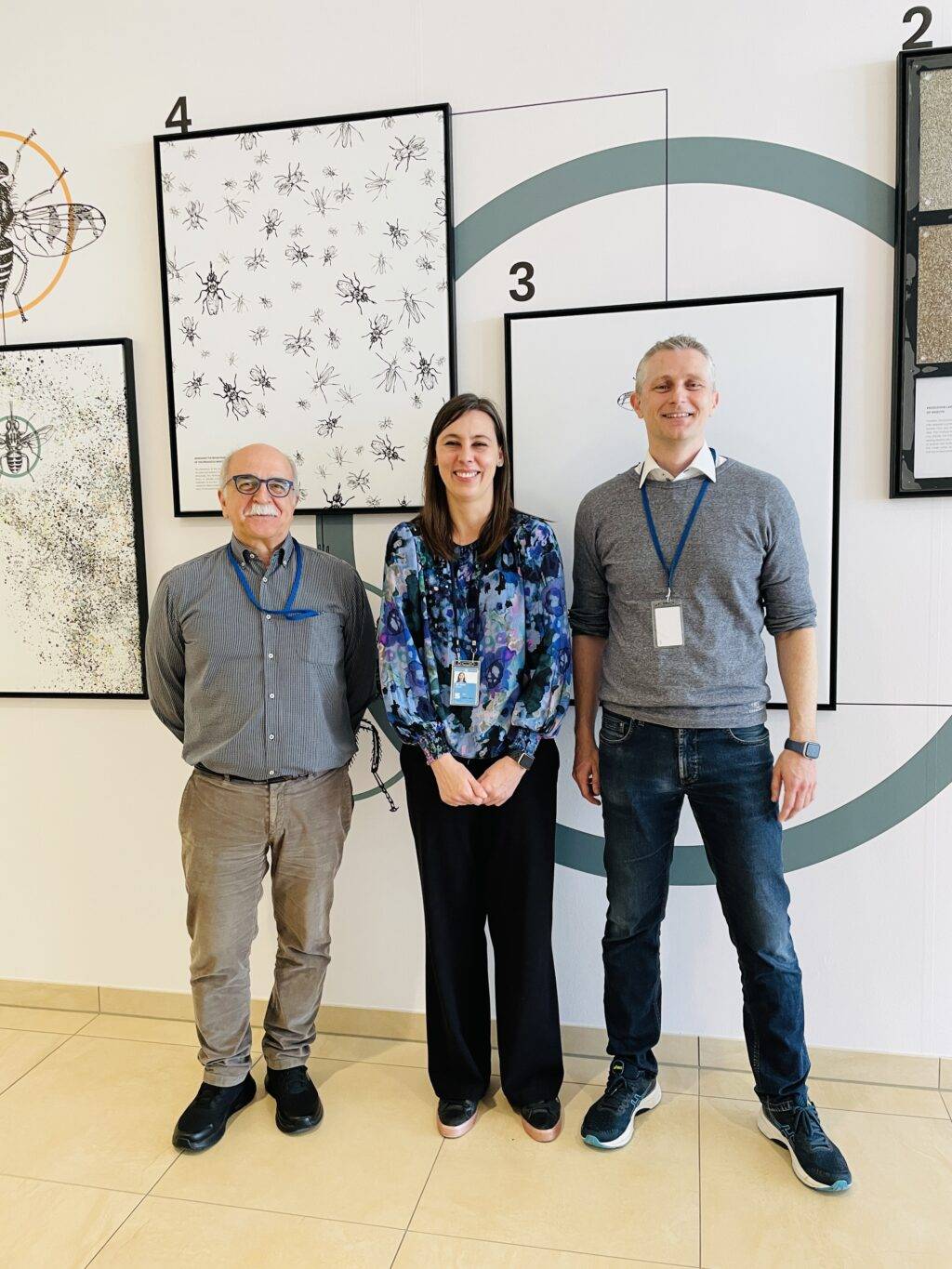
IAEA researchers Kostas Bourtzis, Chantel de Beer and REACT coordinator Marc Schetelig (c) REACT
Advancing SIT for Bactrocera dorsalis and zonata
03 May 2023
The EU-funded REACT project aims to develop an innovative SIT approach that helps protect European agriculture from invasive fruit flies.
In January 2023, REACT kicked off. It’s a project supported by the European Union’s Horizon Europe research and innovation program. The research project unites scientists from Europe, Israel, Mauritius, and South Africa to cooperate in the development and testing of a novel SIT approach to help control the invasive fruit fly species Bactrocera dorsalis and B. zonata.
Marc F. Schetelig is a Professor of Insect Biotechnology and Plant Protection at Justus Liebig University Giessen, Germany, and the coordinator of REACT: “The novelty of our approach is the small scale of insect releases we’re thinking of. Usually, SIT is applied on very large scales, where sterilized insects are released in huge areas over a long period of time. This has been effective. Now, we want to bring SIT to smaller scales, to locally fight quarantine insect pests.”
The two fruit fly species REACT targets, invade European countries, and put agricultural production at risk. To intercept invasions, methods to detect the flies as early as possible are needed. REACT aims to develop a sensitive, cheap, and also fast diagnosis and interception tool for Bd and Bz, which can be used on pooled larval samples.
CRISPR/Cas12a as detector
A prototype interception kit (PIK) will be based on the emerging CRISPR/Cas12a technology combined with recombinase polymerase amplification (RPA). It goes beyond the state-of-the-art assay technologies with an expected detection of 0.000001 ng/μl that is more sensitive and accurate than LAMP. The CRISPR/Cas12a technology-based approach will uniquely allow analyzing pooled larval samples. Thus, detection of the pest of interest in small proportions in mixed samples (e.g., in case of a secondary infestation with Drosophila will allow to save time and significantly reduce costs. Prof Schetelig: “Things are only used if they are cost-effective. It’s a challenge to make SIT cost-effective on a small scale. The strategy we are developing is aiming in exactly that direction. We want to develop insect strains that allow us to separate males from females more easily, because releases of sterilized insects are most effective when you only release males.”
Sexing strains with all male progeny
REACT will develop GSS for Bd and Bz without the inherited semi-sterility for the first time. These strains will allow all male progeny to survive and lead to improvements of genetic stability and economic benefits during the mass-rearing of those strains for SIT programs. A new generic approach for the creation of fruit fly strains will be developed, including novel high-quality genomic datasets and bioinformatic algorithms for the characterization of the Y chromosome in the target species. The pipeline will be freely available, and eventually, the pre-evaluated strains of Bz and Bd will be supplied to mass-rearing facilities.
In April, project coordinator Marc Schetelig visited the IAEA’s insect laboratory in Seibersdorf to discuss the approach with Kostas Bourtzis and other scientists at the lab. Prof Schetelig explains the importance of the IAEA’s expertise for the REACT project. “We’re hopping on technologies that have been successfully developed by the IAEA labs for decades and applied around the world on large scales highly successfully. Therefore, the discussions and exchange of ideas with our colleagues at the IAEA have been important for the field of SIT and the REACT consortium is happy to contribute with the novel strategies developed for insecticide-free pest control.”
